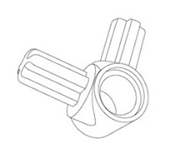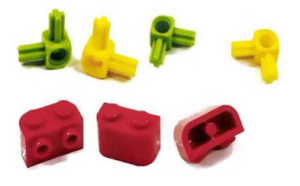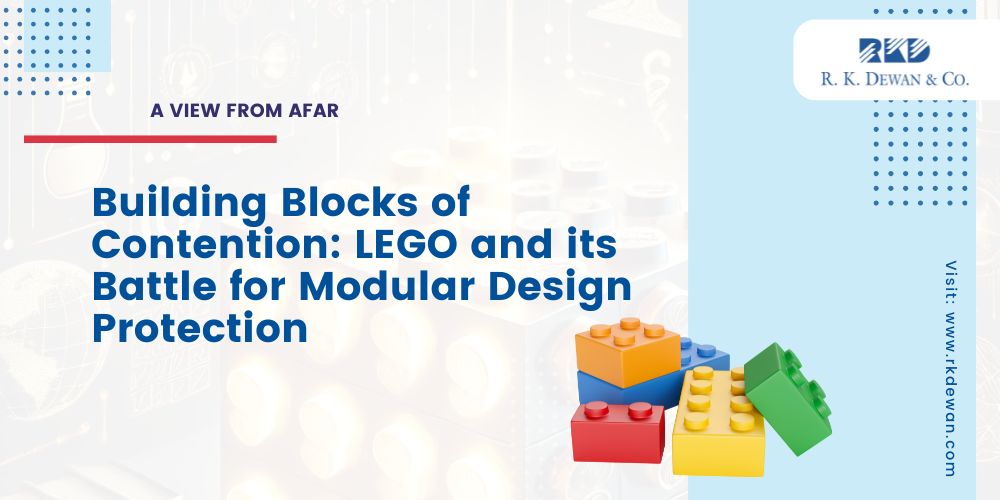Justice Manmohan Singh of the Delhi High Court has remarked in a judgment, “The world is a global village.” This sentiment captures the essence of our interconnected era, where globalization and interconnected markets continually redefine our world. Today, the judgments handed down in courtrooms across the globe can have far-reaching consequences and the ripples of these legal decisions extend far beyond their local jurisdictions, influencing economies and industries worldwide.
Welcome to “A View from Afar,” a series dedicated to examining international judgments and their far-reaching impacts. Through this series, we aim to bridge the gap between diverse legal systems and their global repercussions, offering you a panoramic view of the intricate interplay between law and commerce.
We will delve into landmark rulings from various corners of the world, unpacking the legal reasoning behind such decisions and scrutinizing their practical implications. Each article will provide a thorough analysis, shedding light on how these judgments affect not only the parties directly involved but also affect the regulatory frameworks, corporate strategies, and market dynamics on a global scale.
Whether it is a judgment delivered in any country across the world, we will share our views on its profound impact in other jurisdictions navigating through the labyrinth of international jurisprudence.
The European Community Design Regulation (CDR) is pivotal in defining the extent of legal protection for industrial designs within the European Union. Among its provisions, Article 8(3) introduces an exception for connecting elements of modular systems. This exception allows modular systems, to be protected under design law despite the fact that their appearance may be dictated by technical function.
Join us in this further instalment of “A View from Afar” as weanalyze a recent legal conflict involving LEGO’s Registered Community Designs (RCDs) and the application of Article 8(3) CDR, which is under review by the Court of Justice of the European Union (CJEU) following a referral from a Hungarian Court.
LEGO A/S (“LEGO”) holds multiple RCDs for “building blocks from a toy building set,” in Locarno class 21.01, which are part of its famous modular system:
RCD no. 001950981-0001 containing, inter alia, the following view:

RCD no. 002137190-0002 containing, inter alia, the following views:

*We do not claim any copyright in the above images. The same have been reproduced for academic and representational purposes only.
PozitívEnergiaforrásKft. (“PozitívEnergiaforrás”), a Hungarian company, attempted to import toy building sets into Hungary, including the following parts allegedly infringing LEGO’s design rights:

*We do not claim any copyright in the above image. The same has been reproduced for academic and representational purposes only.
The National Tax and Customs Administration of Hungary took in charge, these toy sets due to potential design infringement. Consequently, LEGO initiated an infringement action before a Hungarian Court.
The Court, however, raised several questions concerning the legal interpretation of the modular exception under Article 8(3) CDR and referred these to the CJEU for a preliminary ruling (C-211/24). This case shines a spotlight on the intricate balance between protecting industrial designs and ensuring fair competition, particularly when technical functions and modular systems are involved.
The Modular Exception and Design Protection
Designs are meant to protect the appearance of the whole or a part of a product. Under Article 8(1) of the CDR, designs that are solely dictated by a product’s technical function are excluded from protection. This provision aims to prevent overlap with patent law, which protects technical inventions. However, Article 8(3) creates an exception to this exclusion for modular systems, allowing connecting elements of these systems to be protected if they meet the standard requirements for design protection, including novelty and individual character, thus, meaning that they can be protected as Community designs.
LEGO’s RCDs are registered under this exception, hence making the modular exception in Art. 8(3) CDR, colloquially termed the “LEGO exception”. The Hungarian Court noted that LEGO is the registered proprietor of patent such as US patent no. 3005282 (which is now expired) for the protection of modular toy building sets and that the purpose of one of these inventions was essentially identical to that of LEGO’s RCDs depicted above.
The Court also noted that the protection under Art. 8(3) CDR does not require the design to serve an aesthetic purpose. It is rather akin to the protection of technical characteristics afforded by a patent. The Hungarian Court considered the creation of such designs to be no more than routine engineering and design activity, which served to extend with additional alternative elements, the toy building set system, which is in the public domain following the expiry of LEGO’s patent protection.
The Hungarian Court was unsure about the legal or political objective of Art. 8(3) CDR, in particular whether it granted the holder a right similar to that of a patent. The judges deemed this question important because of the Court’s obligation under Art. 3(2) Enforcement Directive to ensure that its ruling does not create barriers to legitimate trade.
The Court also deliberated how the designer’s degree of freedom is to be determined in the comparison of the designs. Is it relevant that there are, in general, alternative shapes for building blocks (as LEGO argued) or can only such alternative shapes be considered that fulfil the same technical function? In the latter case, the designer’s freedom would be considerably limited.
Key Legal Questions Referred to the CJEU
The Hungarian Court’s referral centred on two significant questions:
- The Concept of the Informed User:
- The Court questioned whether, in the context of Article 8(3) CDR, the informed user should be considered a sectoral expert with specific technical knowledge. In other words, does the “informed user” apply a higher level of scrutiny when assessing the designs because of their technical nature?
- Furthermore, the Court inquired whether the overall impression of the design on the informed user should be based on detailed technical knowledge or simply visual perception.
- Proportionality of Enforcement Measures:
- The Court also sought guidance on whether infringement actions under Article 89 CDR, which require proportionality in enforcement measures, could lead to a partial or full dismissal of LEGO’s claim. This is significant in cases where infringing products are sold in combination with non-infringing elements.
The Hungarian Court’s referral to the CJEU seeks to clarify the extent of protection granted under this exception, particularly in cases where the appearance of the design is largely functional.
Analysis of the Modular Exception and its Implications
The modular exception allows designs that serve a technical function to be protected if they are part of a modular system with interchangeable components. The rationale behind this exception is to encourage innovation in systems where the interconnection of parts is key, such as LEGO blocks. This protection is essential in preserving the integrity of modular products, which rely on the compatibility and connection of various components.
The Hungarian Court, however, raised concerns that this exception might grant design holders, such as LEGO, an advantage akin to patent protection, particularly given that LEGO’s expired patents once covered similar modular systems. The Court expressed unease about the possibility of creating barriers to legitimate trade by allowing design protection to extend beyond its intended scope.
The “Informed User” in Modular Systems Design
The concept of the “informed user” is crucial in design law as it determines how designs are evaluated for novelty and individual character. The Hungarian Court questioned whether the standard of assessment should differ when considering modular designs under Article 8(3) CDR, where technical function plays a significant role.
LEGO contended that alternative shapes for building blocks exist, and thus the designer’s freedom is not limited to functional aspects. However, PozitívEnergiaforrás argued that the designer’s freedom is heavily restricted by the need for the blocks to serve a technical function, such as connecting with other parts. The CJEU’s ruling on this matter could reshape how Courtss assess modular designs in terms of originality and distinctiveness.
Proportionality and Enforcement of Design Rights
In cases involving both infringing and non-infringing components, such as the toy sets imported by PozitívEnergiaforrás, the CJEU’s interpretation of the proportionality principle under Article 89 CDR will be vital. This provision requires that enforcement measures, such as injunctions or takingproducts into charge, are fair and do not create undue barriers to trade.
The Hungarian Court raised the issue of whether it would be disproportionate to prohibit the importation of the entire toy set when only certain components infringe LEGO’s RCDs. The CJEU will need to clarify whether partial enforcement, such as seizing only the infringing parts, is appropriate in such circumstances.
We now shift focus as to how the Indian intellectual property law, particularly under the Designs Act, 2000, would address similar issues. While the CDR offers robust protection for designs that may serve a technical function within modular systems, the Indian legal framework has its own set of principles for protecting industrial designs, especially in relation to functional elements.
Design Protection under Indian Law
In India, design protection is governed by the Designs Act, 2000, which offers protection for the external appearance of a product as long as it meets the requirements of novelty and originality. Similar to European law, Indian law excludes designs that are dictated solely by technical function. Section 2(d) of the Designs Act defines a “design” as features of shape, configuration, pattern, ornament, or composition of lines or colours applied to any article by any industrial process that are judged solely by the eye.
However, like the CDR, Indian law does not protect designs where the features are purely functional or dictated by technical necessity. This concept is found in Section 4(b) of the Designs Act, which bars registration of designs that are “dictated solely by function.”
Modular Systems in Indian IP Law
While the Indian Designs Act does not specifically address modular systems or exceptions akin to Article 8(3) CDR (the LEGO exception), Indian Courts have nonetheless ruled on cases involving functionality and the boundaries of design protection.
An important Indian case that provides guidance on the issue of designs related to functional features is Bharat Glass Tube Ltd. v. Gopal Glass Works Ltd. (2008), where the Hon’ble Supreme Court of India ruled that designs that were primarily functional, even if visually appealing, may not be entitled to protection. However, if the design has distinctive visual appeal beyond its functional purpose, it could still qualify for design protection under the law. This ruling echoes the balancing act between protecting aesthetic designs and excluding functional features from design protection.
Had the LEGO case been litigated in India, several key issues would come into play:
- Assessment of Technical Functionality vs. Visual Appeal: Similar to the European approach, Indian Courts would first analyse whether LEGO’s design for the building blocks is dictated solely by its functional purpose or if it possesses some visual originality that warrants protection under the Designs Act, 2000. The concept of “visual appeal” is central to the Indian design law framework. If LEGO’s design for its building blocks were deemed to have visual appeal beyond its technical function, it could potentially enjoy design protection in India.
In the Bharat Glass Tube case, the Court emphasized that even functional products may have protectable designs if their appearance offers something unique to the eye. This is significant for LEGO, as their building blocks, although functional, have distinctive features that contribute to their visual impression.
- Treatment of Expired Patents: Another issue that would arise in an Indian context is the interplay between LEGO’s expired patents and its current design rights. Under Indian law, when a patent expires, the invention enters the public domain, allowing competitors to freely use the technology which was protected as a patent. However, design protection remains independent of patent rights. Thus, LEGO’s RCDs would still be analysed on their own merits, even if the patents covering similar technical features had lapsed.
A precedent from India on this issue is the Dart Industries Inc. v. Techno Plast (2019) case, where the Delhi High Court ruled that design protection remains valid even if the corresponding patent has expired, provided the design meets the requirements of novelty and distinctiveness under the Designs Act.
- Proportionality in Infringement Cases: Similar to the proportionality principle under the CDR, Indian Courts apply equitable principles when deciding on infringement remedies. Under Section 22 of the Designs Act, 2000, if infringement is proven, Courts can issue remedies such as injunctions and damages. However, in cases such as the LEGO case, where infringing products may be sold alongside non-infringing components, Indian Courts would likely apply a proportional approach to the remedy. In Rajesh Masala v. Satya Masala (2006), the Delhi High Court took a balanced view in granting injunctive relief without excessively hindering legitimate business activities. This suggests that in India, the Courts might allow PozitívEnergiaforrás to sell non-infringing products while restricting only the infringing components.
The “Informed User” Standard in Indian Law
The concept of the “informed user,” which the Hungarian Courts raised as a key issue, also finds a counterpart in Indian law. In India, the test for design infringement typically focuses on the “eye of the customer” rather than a highly technical analysis. Courtshave to consider that whether the design, as seen by an average ordinary consumer of an imperfect recollection, creates the same overall impression as the alleged infringing design. This aligns with the CJEU’s emphasis on the “informed user.”
The case of Dabur India Ltd. v. Amit Jain (2009) is a prime example where the Delhi High Court applied the informed user test, stating that the impression on the general public matters more than the specific technical details of the product. In the LEGO case, the Indian Courts would likely focus on whether the overall impression of LEGO’s blocks, as perceived by a consumer, differs from that of the infringing products.
In conclusion, the Lego case highlights the complexity of balancing intellectual property rights with the need for fair competition, particularly in industries where modular systems are prevalent. The CJEU’s forthcoming decision in the LEGO case will have far-reaching implications not only for the protection of modular systems but also for how design law intersects with technical functionality. The interpretation of Article 8(3) CDR will determine whether companies like LEGO can continue to protect their modular systems through design law, even after their patents have expired. At the same time, the ruling will provide much-needed clarity on the role of the informed user and the proportionality of enforcement measures in cases of design infringement.
If the LEGO case were litigated in India, the Indian Courts would likely grant protection to LEGO’s RCDs if they are found to possess aesthetic appeal beyond their technical function. Based on Indian precedent, the Courts would also consider the balance between enforcing LEGO’s design rights and preventing barriers to legitimate competition. In cases where only part of the product infringes the design, Indian Courts would likely adopt a proportional approach, targeting the infringing parts while allowing the non-infringing elements to remain on the market.However, LEGO’s success in India would depend on whether the Courts view the modular system’s design as sufficiently distinct from purely functional elements. The Bharat Glass Tube and Dart Industries cases suggest that Indian law strikes a delicate balance between recognizing design protection and preventing monopolization of functional features. Therefore, LEGO would need to prove that its design offers something visually unique that transcends mere functionality, which seems plausible given the long-standing distinctiveness of its iconic building blocks.Overall, India’s IP framework would likely provide LEGO with some level of protection under the Designs Act, 2000, however the Courts would be careful to ensure that this protection does not stifle fair competition or perpetuate monopolies beyond the life of expired patents.


